Pediatrician Lawrence Palevsky Destroys Vaccine Mandate Arguments During CT Testimony
February 19, 2019 Connecticut Testimony Against HB5044
TRANSCRIPT
Madam Chair:
Dr. Larry Palevsky. Is Dr. Larry Palevsky here? Thank you, sir.
Dr. Palevsky:
Good afternoon and thank you for the opportunity to speak before you. As a medical student starting in 1983, I was taught to critically think and there were a couple of assumptions that we’ve heard today that I’d like to challenge. One of the assumptions that we heard is that high vaccinations protects those vulnerable and it reduces the probability of those people vaccinated to spread the germ to others.
Dr. Palevsky:
Never once in my 37 years have I ever seen a study that showed that a vaccination makes the bacteria or the virus disappear from the body of those who were vaccinated. And yet, all we continue to say is that once a vaccine is given, not only are people immune, but the bacteria and viruses are no longer in their bodies to transmit to others, and that is not true.
Dr. Palevsky:
We also heard that once you’re vaccinated, you are immune. Well, actually, the textbooks don’t say that. The textbooks say that two to 10% of children who receive a vaccine actually don’t develop an antibody at all. And then there’s a whole number of children who will develop an antibody, but we don’t even know the percentage because they will develop the antibody but won’t be protected at all.
Dr. Palevsky:
So there are more children who don’t develop the protection from the vaccine that are actually unvaccinated in the state of Connecticut. We are told that unvaccinated children are the only children and the only people that are capable of spreading germs. But that’s not true either because vaccinated children can still spread germs, they can still carry the bacteria and viruses that we vaccinate against and so can adults. Adults can also carry the bacteria and viruses that we vaccinate against.
Dr. Palevsky:
We are told that when you vaccinate, the bacteria and the viruses completely disappear from the earth, well they don’t. They change activity, they may mutate and you heard before that the measles virus doesn’t mutate, well it does. There are cases of outbreaks in Canada that have shown that a new virus came about and there are studies in the literature that show that when a vaccine is given, you can induce a strain replacement, meaning that over time, the bacteria and the viruses will mutate but they don’t disappear from the earth.
Dr. Palevsky:
They are still here, their activities and they may even mutate. And even those who are vaccinated can still carry them and transmit them. But unfortunately, we’re targeting 2% of the children who are not the sole carriers or transmitters of germs and vaccinations, don’t stop people from carrying and transmitting germs just because they’ve been given the vaccine.
Dr. Palevsky:
And my last point is we heard that vaccines are unequivocally safe. We have a public health crisis in our midst. Chronic illness, brain damage, neurodevelopmental disability, and there are chemicals in the vaccines that are shown in animal studies to contribute to this kind of brain inflammation that we are turning our backs on and we are creating many of these children and we’re ignoring it for the sake of continuing to vaccinate. Thank you.
Madam Chair:
Thank you for your testimony. Are there any questions or comments? Yes, representative Klarides-Ditria.
Klarides-Ditria.:
Thank you for your testimony. I just have one question. Excuse me. Some of the vaccines and the ingredients in the vaccines we’ve heard about could be aluminum, could be mercury. Is there some concern that when these ingredients are given to such young children that as we’ve heard, their immune systems are not completely developed yet. If it stays in their system and or stays in their brain and does not come out of their system as what we’ve heard it’s supposedly supposed to leave their system, what are your thoughts on that?
Dr. Palevsky:
Well, you heard earlier that there’s no real concern about aluminum because it’s such a small amount and so it really shouldn’t matter. But the kind of aluminum that we put into vaccines is a different kind of aluminum that we see environmentally. This is called a nanoparticle, and nanoparticles bind really tightly to the bacteria antigens, the virus antigens, the food protein antigens, and any other contaminants that are in the vaccines that we may not know about.
Dr. Palevsky:
And we know that the biochemical properties of nanoparticles is that they are capable of entering the brain. And so we have not evaluated the safety of the aluminum nanoparticle and its injection, and where it goes when it gets into the body and whether it gets into the brain. Do vaccine ingredients belong in the brain? No. Do they get into the brain? No one has ever studied it, but animal studies, using the same chemicals that are in vaccines that we give to children, directly demonstrate that the vaccine ingredients do enter the brain.
Dr. Palevsky:
We are ignoring this information. There are scientists in Europe who’ve actually done studies on the aluminum nanoparticle and have shown that it can persist in the brain for years and decades. And so what we’re seeing is a large outbreak of neurodevelopmental disabilities in adults, including Alzheimer’s. And one of the main factors that they’re finding in brains of people with Alzheimer’s is the aluminum nanoparticle that’s directly related to the vaccines that we’re giving.
Dr. Palevsky:
So we have never studied whether the aluminum that we’re giving in vaccines gets into the brain and we’ve never measured whether it stays in the brain and what it does if it does stay in the brain, but we do know that vaccines are supposed to cause inflammation in the body, but we have more than half of our children with chronic inflamed conditions and we’ve never allowed ourselves to ask the question, if the vaccines cause inflammation acutely, do they continue to create inflammation chronically?
Dr. Palevsky:
We have one in five with neurodevelopmental disabilities, one in 10 with ADD and ADHD, one in 35 with autism, one in 11 with asthma and one in 20 under the age of five with seizures and the autoimmune diseases are exponentially rising and we are finding that the viruses and the bacteria that we’re injecting into the body along with the adjuvants create something called molecular mimicry, which means the body sees those viruses thinking that it’s foreign, but actually finds pieces of those viruses that match pieces of the self and the immune system doesn’t differentiate between what it’s been told to reject and itself. So it will turn the immune system on itself leading to an autoimmune condition.
Dr. Palevsky:
We know this about hepatitis B, we know it about the Gardasil vaccine and we know what about the flu vaccine and we continue to say unequivocally, that the vaccines have been studied effectively and that they’re safe, and that’s just not true.
Klarides-Ditria.:
Thank you for your testimony. Thank you for answer. Thank you.
Madam Chair:
Thank you. Representative Steinberg.
Steinberg:
Thank you, Madam Chair. Dr. Palevsky, good to see you again. I’ve been intrigued by your statement when we met previously with regard to the aluminum adjuvant passing through the blood brain barrier and I’ve done a little research on my own. I’m not a physician. I gave up premed freshman year in college. I pass out of the sight of blood, but I did do a little research and it suggests that the aluminum was chosen as an adjuvant because it’s particularly immobile and because of its solubility, it does sort of fall apart pretty easily.
Steinberg:
But as a nanoparticle it would need to be charged before it can pass through the blood brain barrier because the membrane is hydrophobic and would not make that possible. And he also made the point there are various sizes of nanoparticles and making a general statement that they are all going to be passed through the blood brain barrier is arguable. And then the final point is, have you looked at human brains of both those who have been vaccinated and those who haven’t to be able to make a comparison of the levels of aluminum in the brain to rule out the possibility of this other sources of aluminum that are creating these nanoparticles that are in the brain?
Dr. Palevsky:
Great. Thank you. I’ll answer the second one first. There have been studies looking at the brains of people who had autism and those who didn’t and compared the percentage of aluminum, and it was exponentially larger in those with autism than those who had no neurodevelopmental disabilities. But I do want to mention that aluminum is not in vaccines in a vacuum. And so, one of the reasons the aluminum is in there is to galvanize or catalyze an immune response against the antigens that are bound very tightly to it.
Dr. Palevsky:
But in every vaccine where you see an aluminum nanoparticle, it is accompanied by polysorbate 80, which is an emulsifier. And an emulsifier can go through both water and fat materials. And any of the experts that I’ve ever asked, why is polysorbate in the vaccine? They have said, “To help disperse the vaccine material away from the vaccine injection site.” So polysorbate 80 is known as an emulsifier. It’s also used by drug companies to bind to drugs to assist drug delivery into the brain.
Dr. Palevsky:
So polysorbate 80 can pass through the brain and it binds very tightly to aluminum and in animal studies, when using drugs bound to nanoparticles, bound to polysorbate 80, you massively increase drug penetration into the brain than if you didn’t have the polysorbate 80 alone. So polysorbate 80 is a disperser. It does move things away from the injection site and it increases the potential for entry of whatever is attached to the polysorbate 80 into the brain.
Dr. Palevsky:
There’s another chemical in the vaccines called two-phenoxyethanol, which actually disrupts the health of the cell membranes of the body. It’s well known to be a detergent in that respect and yet we don’t study it to see what it does when it’s injected into the body and whether it actually changes the cell membrane that would allow almost anything from the vaccine or even from the bloodstream to enter into cells or enter into the brain.
Dr. Palevsky:
And we know that aluminum as a nanoparticle can destroy mitochondria, and mitochondrial disease is one of the basic patho physiological findings in people with chronic inflammatory conditions. We also know that the aluminum nanoparticle can destroy the waste product removers of the cells, those are called the lysosomes. Those aluminum nanoparticles that can destroy the lysosomes change the way the cells remove in wastes and inflammation. Therefore, you are increasing the potential for chronic inflammatory conditions.
Dr. Palevsky:
Polysorbate 80 can go right through the cell membrane. two-phenoxyethanol can destroy the cell membrane and allow material to go in and anything bound to the aluminum can still go into areas where it shouldn’t go in. And so, when you hear millions of parents, it’s not even hundreds of thousands, but when you hear millions of parents saying, “My child was fine and then deteriorated pretty badly,” and you have millions of parents hearing from their physician that had nothing to do with the vaccine but the parents saw it right in front of them, it’s our job to say, “Is there something in the vaccines that actually can penetrate the brain that can disrupt the mitochondria, that can destroy the lysosomes that’s doing this?”
Dr. Palevsky:
Because it can and it most likely is, and we’re refusing to look at it and these families are real-
Steinberg:
Can I back to the original question? Sorry for interrupting.
Dr. Palevsky:
Sure. No.
Steinberg:
You mentioned the surfactant, which seemed to be a very important part of the ability to pass the blood brain barrier. And again, I’m just waiting to hear, nanoparticles salivated by highly charged or highly polar surfactant coating are incompatible with the hydrophobic core of the membrane, so they don’t go through the cell walls, and if you turn the surfactant toward being more hydrophobic, you also decrease the lifetime of the nanoparticle because they no longer remain as readily soluble and will begin to aggregate as buckyballs and the like.
Steinberg:
So the point being is the argument that a surfactant brings the adjuvant through with it, from what I’ve read seems to be arguable.
Dr. Palevsky:
Sure. But if you look at the pharmaceutical literature, the pharmaceutical literature says that number one, they have trouble penetrating the brain by delivering drugs because of the presence of the blood brain barrier. Number two, if they attach a nanoparticle to the drug, they can increase penetration of the drug into the brain. Number three, if they put an emulsifier like polysorbate 80 bound to the nanoparticle, they can increase penetration of the drug in the animal studies 20 fold.
Dr. Palevsky:
So I don’t know what reference you have, I’d have to look at it, but there is scientific evidence to show that went up an emulsifier like polysorbate 80 is bound to a nanoparticle and not bound to a drug, it can enhance delivery into the brain and across the blood brain barrier and vaccines are constructed in the same manner. Polysorbate 80, aluminum nanoparticle bound two antigens that are in the vaccines.
Steinberg:
I agree with you that the whole purpose of the surfactant is to ease the passage, but what I’ve read at least, and I’m glad to share with you suggests, first of all, it’s not their intent for the adjuvant to be the one passing through the blood brain barrier and that aluminum is clearly poorly suited and perhaps selected as an adjuvant because of the greater difficulty passing through the blood brain barrier as a nanoparticle, even with the presence of the surfactant, which I imagine is there to bring other elements of the drug through the blood brain barrier.
Dr. Palevsky:
Sure. But there have been numerous studies done by people outside the mainstream medical community who have attempted to look at what happens to the nanoparticle when it’s injected into the body and they have found that not only does it penetrate the brain, it persists for years.
Dr. Palevsky:
And so again, if we’re seeing a public health emergency of chronically disabled and chronically ill children, and we know that there are ingredients in vaccines that can potentially contribute to that happening, and we don’t have any scientific studies examining whether or not any of these ingredients contribute to the development of these chronic inflammatory conditions, we have a problem.
Steinberg:
I agree with your central argument. If you were really talking about proven causality, what you’ve described over and over again seems to be a correlation. However, you failed to take into account the tens of thousands of chemicals we’ve introduced into our food and into our environment. Have we evaluated all those and should we be stopping all those 10,000 chemicals? Because they may be the cause of the presence of these various elements in the brain?
Dr. Palevsky:
No, I appreciate that, but there’s a difference between what you inhale and what you ingest and what you inject. And what you inhale and what you ingest has the capacity for the immune system along the airway and the immune system along the 26 feet of intestines in children, plus the liver to actually eliminate that before it gets into the body. But when you deliver it through an injection, 100% of it gets in and it’s never been studied as to what happens to it and whether or not it stays in the body and what it does when it stays in the body, and what does it bring with it, especially since we know that there are contaminants in vaccines, like foreign cells, like foreign DNA.
Dr. Palevsky:
I mean, in 2005 the FDA reported that they knew that there was foreign DNA in the vaccines and they didn’t study it at all, but they did make a side note and say, “Well, we don’t know if it’s going to cause any damage and it could, but we’re just going to tell you what the amount that’s legal for being in the vaccine.” So we don’t know everything that’s attached to these nanoparticles. We assume that when you inject the vaccine, it’s not going to hurt you. We also assume that it’s going to give you immunity and neither of those is true.
Steinberg:
I’m still focused on the fact that we do know that many chemicals in our environment are carcinogenic, are endocrine disruptors, that have any number of other [inaudible 00:17:52] mutations and the like and those are not injected. So many of those things are present that end up in our bloodstream because they’d been ingested or through other means. I’m just not quite sure I can buy your argument, “This is all because of vaccines,” because you’ve noticed some of these incidents when there are all these other factors in our environment that coincidentally, had been introduced along the same timeframe as vaccines that could equally, if not more likely be involved, given their pure number of them involved.
Dr. Palevsky:
Sure. I appreciate that question. The fact of the matter is that vaccine ingredients have never been tested for mutagenicity or carcinogenicity and there are actually statements in the package inserts that say that this product has never been tested to see whether it causes mutations in the DNA, or whether it causes cancer.
Dr. Palevsky:
So you’re right, I think we should be equally concerned about the injection of these materials, but I’ll say that in over 21 years of actually watching the health of vaccinated children in the same community as the health of unvaccinated children, I don’t see nearly as many chronic inflammatory conditions in those who are unvaccinated as I do in those who are vaccinated. And a colleague of mine is currently engaged in a wonderful study looking at the health outcomes of fully vaccinated children, partially vaccinated children and unvaccinated children.
Dr. Palevsky:
In his preliminary data, he’s already seeing quite a stark, statistically significant difference that the unvaccinated children are unanimously healthier with fewer chronic illnesses. The next fewer illnesses are seen in the partially vaccinated children and the most severe, chronically inflamed conditions are seen in the fully vaccinated children. So I think we do have observational data just by watching to see, well how many of the kids in the community who don’t get vaccinated actually have cancer? How many do get cancer living in the same community who are vaccinated? Those vacs versus unvacced studies have never been done by the mainstream medical community or scientific community.
Dr. Palevsky:
So I agree with you. I think environmental chemicals are definitely a concern, but we’re seeing stark differences just based on vaccinated versus partially vaccinated, versus unvaccinated in the same communities, and we’re seeing it in the same families where you have parents who vaccinated their eldest child, saw very significant damage done to that child, and then had two or three more children and did not vaccinate them or partially vaccinated them. They have their own study because they see that the youngest who have not been vaccinated are far and away the healthiest, living in the same home, living in the same environment, the same exposure to toxins, the same exposure of parenting, same foods, same medical care and different health outcomes.
Dr. Palevsky:
My experience is that the medical community refuses to acknowledge that there are faults with the vaccination system that are much greater. Vaccine injury is much more widespread than we’re giving it credit for, and when you have two to 10% of your children in the community who might not even develop an antibody, you already have a tremendous number of children who are not even immune. So we’re saying that all these children are immune, but vaccination doesn’t guarantee immunity, especially for those who don’t develop an antibody, and then for those who do and don’t even get protection, even if they do.
Dr. Palevsky:
It strikes me that we’re sitting in a scientific community and we’re saying that if you vaccinate a child, the virus or the bacteria just disappear from their body and they can’t transmit it anymore. That has never been proven, but it is generally believed to be true, and we propagate that without really looking at the science. So we’re making a lot of assumptions that the only people carrying the germs that we have to worry about are the unvaccinated, because somehow the adults don’t carry it and somehow the vaccinated couldn’t possibly carry it, because they’ve been vaccinated even though more than 10% of them might not even be immune from it.
Dr. Palevsky:
So there are a lot of assumptions here that I think we’re just agreeing to that really is not scientific at all.
Steinberg:
I would certainly agree with you that there are a lot of assumptions in this conversation. Representative Michel.
Michel:
Thank you, Mr. Chair. Thank you Dr. Palevsky for coming to testify. I have some questions to ask. Two questions. One, why do doctors recommend that all pregnant women receive a flu and DTAP vaccines if vaccine products have never been tested for safety during pregnancy when there are no studies to prove that it even prevents these infections in infants? And does the recent study about flue vaccines and increased miscarriage rates concern you?
Dr. Palevsky:
I’ll answer the second one first. There’s definitely divergent views about whether the flu vaccine contributes to miscarriages. You have the medical community that says no, and then you have increasing numbers of mothers, pregnant women who are saying, “Yeah, I was fine. I got the flu shot and I miscarried.” And then you hear the authorities say to them, unequivocally, “No, it had nothing to do with the flu vaccine.”
Dr. Palevsky:
So we’re losing experiential and observational data because our belief systems refuse to acknowledge that there may be an uptick in the number of women who are undergoing miscarriages. But the thing about giving flu vaccine and T-DAP to pregnant women basically supports the idea of cocooning, meaning that if you vaccinate the mother or the pregnant woman, she will be immune so that when her baby is born, the baby will be protected from getting pertussis, basically. Diptheria is really non-existent even though it’s around, it’s just not causing infections, and vaccines don’t make the germ just disintegrate into thin air.
Dr. Palevsky:
But it’s also to theoretically prevent her from developing the flu. But nine years ago in the Vaccine Journal, there was a study actually looking at flu vaccine in pregnant women. And it showed that women who are given the flu vaccine had increasing inflammatory markers and nobody knows what they mean. But yet, you have literature that demonstrates that babies that are exposed to increasing inflammation in utero have increasing incidents of schizophrenia and mental health disorders by teenage years.
Dr. Palevsky:
So again, we’re not looking at the longterm effects of injecting material that does cause inflammation, and then again, if it does cause inflammation, how chronic is that inflammation? Does it persist? And then when you re-vaccinate and get further exposed to other factors in your environment that stress you, are you creating a downhill effect to further disease?
Michel:
And last, why are vaccine products only safety tested for days and months rather than four or five years as with pharmaceutical drug products? And why don’t vaccines use the gold standard in their classical controlled, double blind studies to prove safety as used for all other pharmaceutical products?
Dr. Palevsky:
So I do want to say that you heard before that vaccines are double blind, randomized, placebo controlled study, but they’re not. And I would love to have the opportunity to work through the scientific literature to show that not one ingredient in vaccines has ever been injected into a group of kids with a control group that’s given a placebo. That’s never happened. But vaccines are not considered under the same standards of medicines. They’re considered biologics and the vaccine industry has adopted and given permission to not study vaccines the same way medicines are studied.
Dr. Palevsky:
They also have said publicly that it’s unethical to keep children unvaccinated during a study. So that’s why they say, we don’t see studies looking at four weeks, eight weeks, 12 weeks, six months later. I mean, we do have these surveillance studies, but if a child gets vaccinated at two years of age and then six months later, never having had asthma starts to get asthma, even though there’s evidence in the literature, how vaccines can favor the development of a wheezing illness, where we have no data to actually say yay or nay, that though that vaccine in combination with what the kid got in the first two years may have contributed to the onset of that chronic inflammatory condition.
Dr. Palevsky:
So we are demanding that the proper safety studies be done and we are told that they won’t be, because we can’t leave children un-vaccinated for any length of time. And then when we say, “Well, we have all these kids who are unvaccinated who can be in the study,” they say, “Well, they don’t have the same demographics and all the same diets. They don’t have the same home environments, so we really can’t compare one to the other.” But we do have the families who have the fully vaccinated, partially vaccinated and unvaccinated kids. And we don’t have the full study yet, but we have tremendous observational data that show that these kids who are unvaccinated are much healthier.
Madam Chair:
Thank you. Are there any other questions or comments? Thank you for your testimony, Doctor.
Dr. Palevsky:
Okay, thank you.
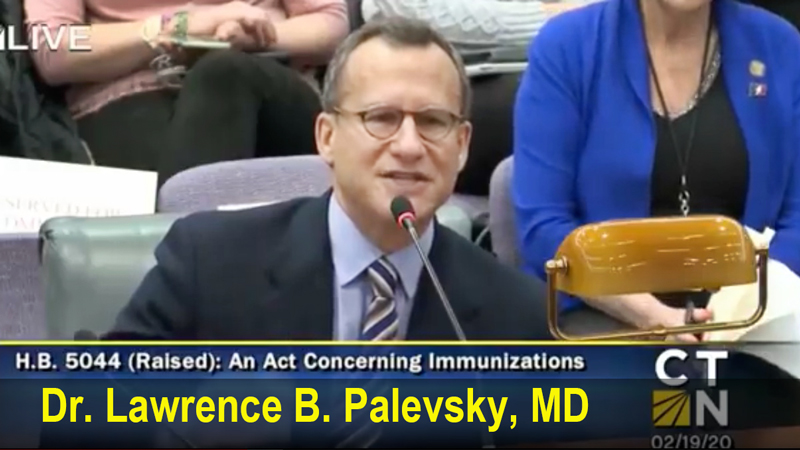






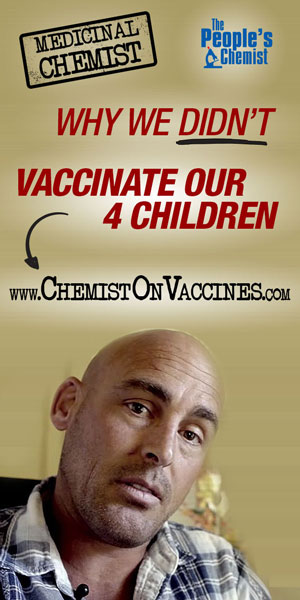
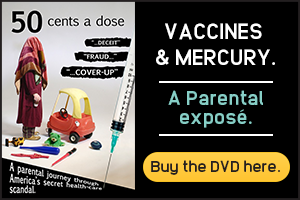
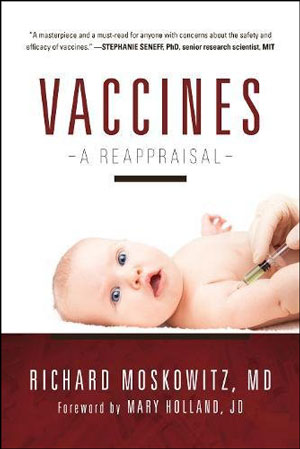
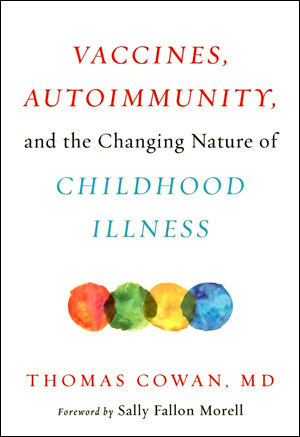
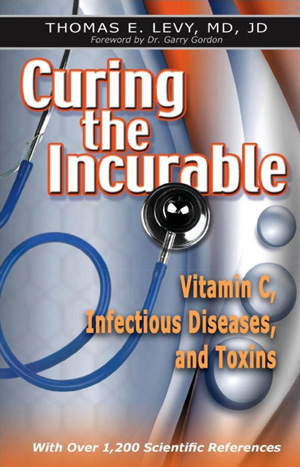
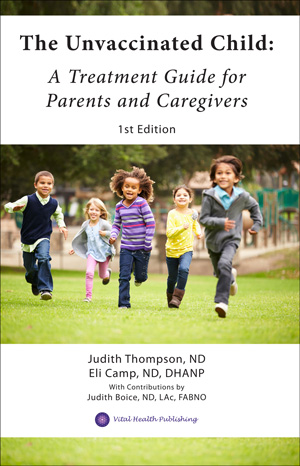
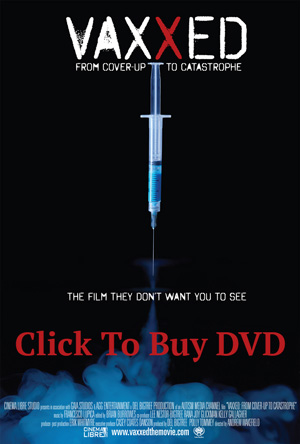
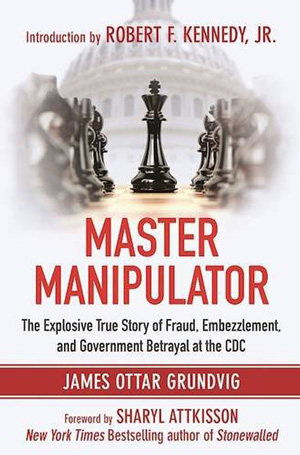
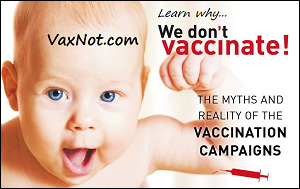
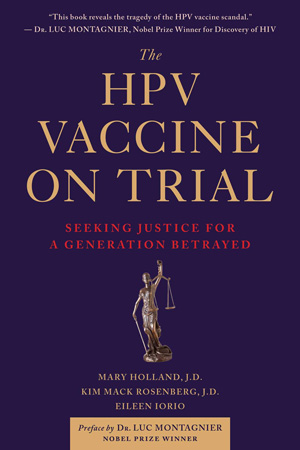
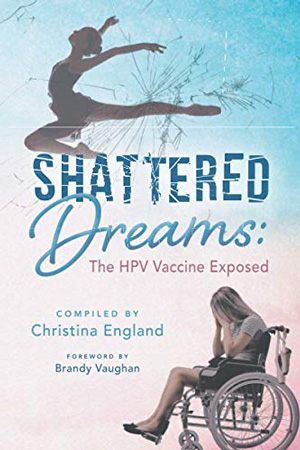
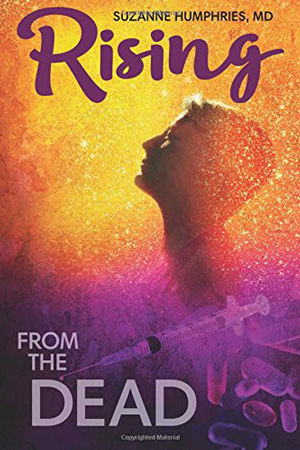
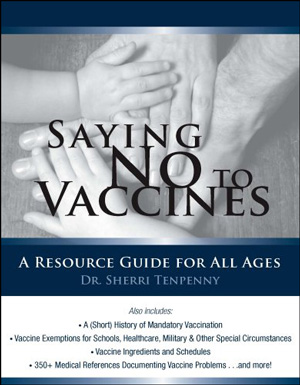
Thank you Doctor for your help and standing up for parents and children.
Steinberg got his rear end handed to him and showed who he is. He is an activist, not a representative. I will tell you he is very radical. He likes total government control. He needs to go be a dictator in another country!